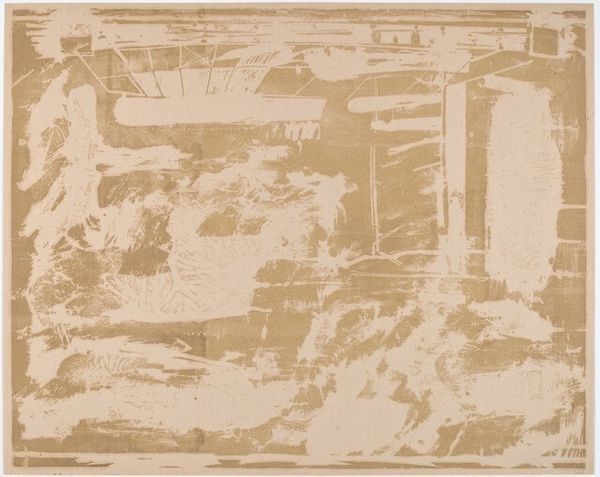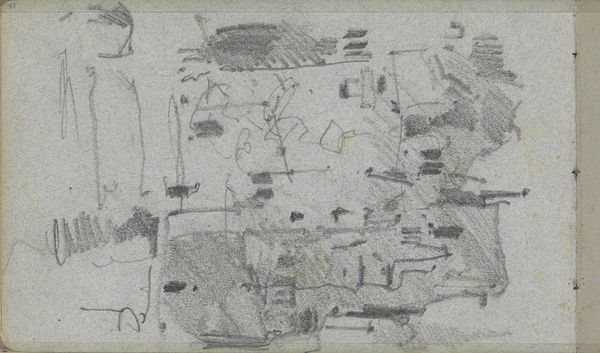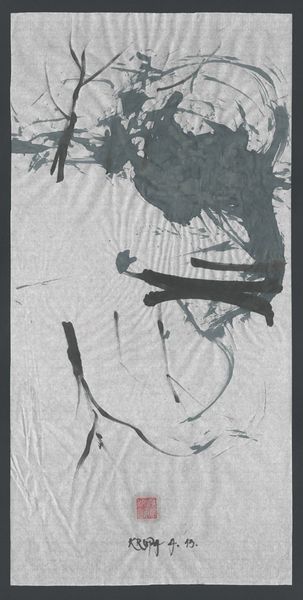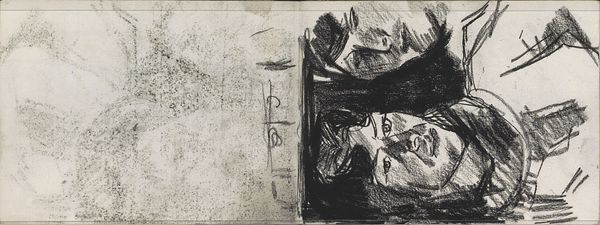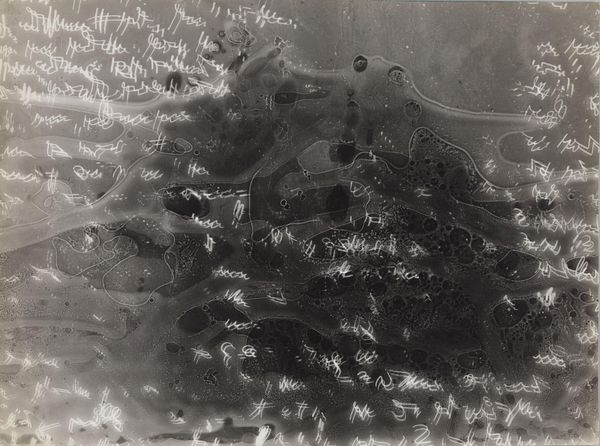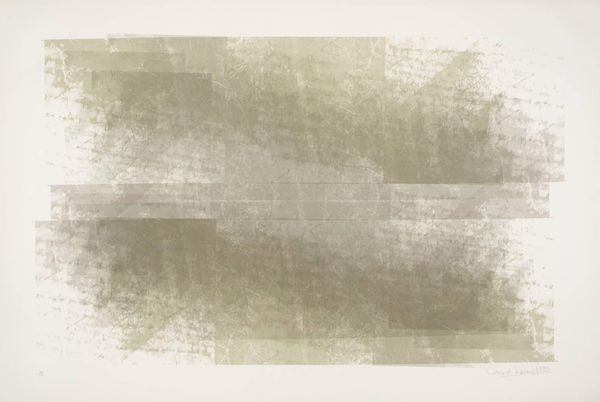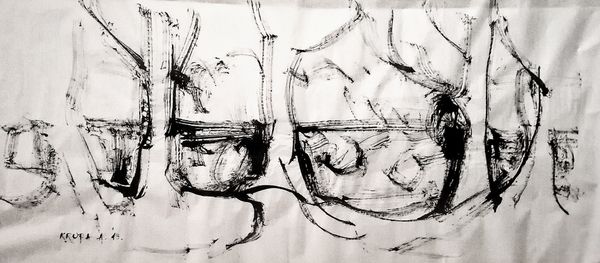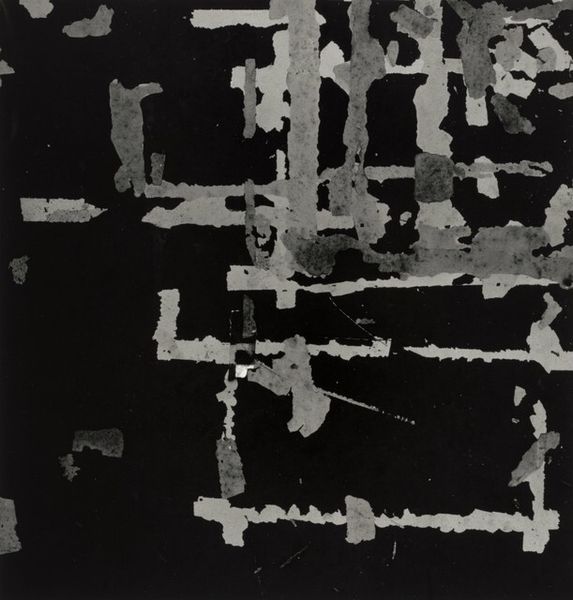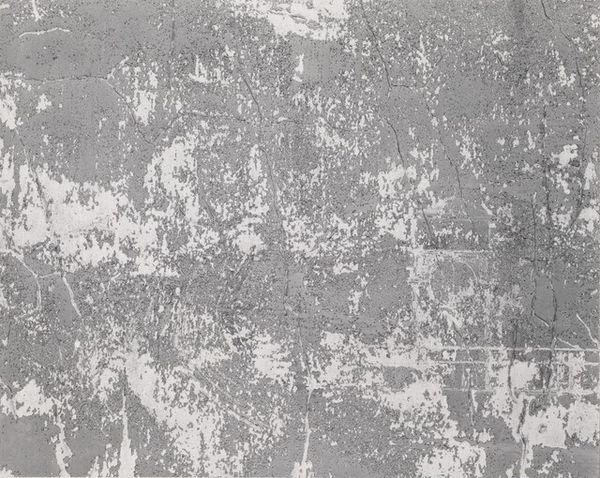
drawing, ink
#
drawing
#
contemporary
#
ink painting
#
landscape
#
ink
#
geometric
#
orientalism
#
abstraction
Dimensions: 35 x 69 cm
Copyright: Creative Commons NonCommercial
Curator: Looking at Alfred Freddy Krupa's 2013 piece, "The Circular Landscape," executed in ink, one is immediately struck by its swirling dynamism. What's your initial impression? Editor: It feels like a visual metaphor for cyclical time or perhaps even ecological systems—a reminder of the interconnectedness of everything. There's an almost primal feel to the black and white strokes, something elemental. Curator: Krupa's work often plays with the tensions between tradition and innovation, especially within the framework of ink painting. His practice builds from a history that prizes skillful representation of nature, but he certainly takes his work to other places. How do you interpret that duality in this particular image? Editor: I think that here the stark geometric abstractions contrast sharply with the fluidity associated with traditional ink work, pointing to a visual paradox that might reveal his artistic identity and concerns. The symbol, the circle, evokes completion but the lack of internal symmetry implies struggle against something perhaps established convention? Curator: Interesting take. The use of geometric forms reminds me of modernist trends appropriating the exotic, bringing what were thought to be global vocabularies back into academic painting. These strategies often involved complicated forms of orientalism in their day. But here in Krupa’s landscape the integration feels far less fraught than in much early modern work. Editor: Indeed. Looking more closely, there's a raw, almost urgent quality to the brushstrokes, which subverts a conventional landscape aesthetic. The circle isn't perfect; it’s broken, blurred at times—implying a certain decay or inevitable change. White spaces might also suggest ideas struggling to find representation, no? Curator: The composition pushes at our need for recognizable imagery. One almost grasps something familiar before it dissolves again into abstraction. Krupa, I feel, asks us to be comfortable with the unresolved. And perhaps asks a lot of an orientalist framing for his work. Editor: And what does such restless destabilization bring? It’s an image speaking to continuous cycles rather than fixed meaning, as if showing natural processes where growth, ruin and renovation happen at once. It challenges, fundamentally. Curator: A powerful meditation on impermanence and process, wouldn’t you say? Editor: It invites contemplation of deeper symbolic significance in the visible world around us. A reminder that images hold cultural memory but offer potential for continued regeneration.
Comments
No comments
Be the first to comment and join the conversation on the ultimate creative platform.
